|
Lebanon's forgotten "Cedar" rocket program
Norbert Brügge,
Germany
|
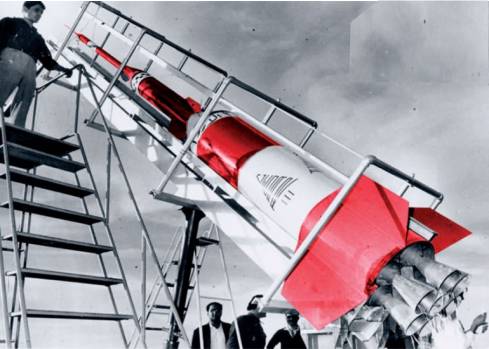
|
In 1961, a
group of Armenian-Lebanese mathematicians, physicists and engineers, mainly
from the Haigazian University in Beirut, dubbed the Lebanese Rocket Society
and attempted to launch rockets into space. The group of scientists manufactured
rockets, which they christened Cedar, and conducted several trials. The
rocket launches, cast as Lebanon's contribution to the worldwide race
to conquer space, captured newspaper headlines, and the Lebanese Rocket
Society's mad venture was subsequently adopted by the Lebanese army. In
1967, shortly after the Arab states waged a military confrontation with
Israel, the program was brought to an abrupt halt, the laboratory was
shut down, and the story of the Lebanese Rocket Society was seemingly
forgotten forever.
The History
(Main source: Prof. Manoug Manougian (former head of the Lebanese
Rocket Society), University of South Florida,Tampa, 25 May 2011)
In April 1961 was prepared a rocket of 1.75-meters length. It was selected
Kchag in the Ain Saade area for the launch. Although the rocket performed
successfully, reaching an altitude of about 1,000 meters. In May
1961, a second similar rocket was launched on Sannine. It soared about
2,300 meters. The rockets were named Cedar-1.
It following experiments with multi-stage rockets. The engineers devised
a system that would separate the first and second stages while in flight.
In September 1961, under the supervision of the Lebanese army was successfully
launched a two-stage, 2.85-meter rocket. The rocket was named Cedar-2.
The first stage had a 10-cm diameter, while the second had a 7.5cm diameter.
The rocket rose to a height of about 2,500 meters.
- The Cedar-2 series (-2A,
-2B, and -2C) proved that we had a viable and safe propellant.
- The rocket design functioned well and the device for separation of stages
in flight was perfected.
- An area overlooking the Mediterranean in Dbayeh was assigned as permanent
launch site.
- As a result of national interest in the study of rocketry, the Lebanese
Rocket Society (LRS) was formed.
|
|
It following the construction and launch
of three-stage high altitude rockets. These produced Cedar-3 and Cedar-4
rocket was a cooperative effort between Haigazian College Rocket Society
(HCRS), LRS and the Lebanese Army. Cedar-3 was launched on Nov. 21, 1962.
Cedar-4 was launched on Nov. 21, 1963. Cedar-3 was 6.8 m long 0.52 m dia
total mass 1250 kg full.
Cedar-4 appears to have used
a different first stage, longer and thinner, perhaps the same diameter
as the second stage. Cedar-4 reached an altitude of 145 km.
The program for 1964 to 1966 involved the construction of more powerful
and reliable rockets to perform telecommunication experiments. Propellants
were received from France. The first step was to conduct static tests
that were performed in Dbayeh. Static tests involve holding a rocket in
place without flight, ignite the propellant, and measure the characteristics
of the propellant, the nozzle, and the metal used for the body of the
rocket.
On Sept. 23, 1964, was launched Cedar-6. This was a 3-meter rocket equipped
with electronic instruments in the nose cone. Cedar 6 flew to an altitude
of 14 km.
On May 12, 1966, Cedar-7 was ready to be launched. This was a two-stage
rocket with a payload of 20 kilograms designed to fly to an altitude of
70 kilometers, with a range of about 100 kilometers. It carried instruments
to study rocket design, telemetry and recording. At ignition, Cedar 7
exploded on the ramp.
The Cedar-8 was a two-stage rocket with a maximum altitude of 110 km.
The launch on Aug. 04, 1966, was successful. The 350-kg rocket was 5.7
m long.
|
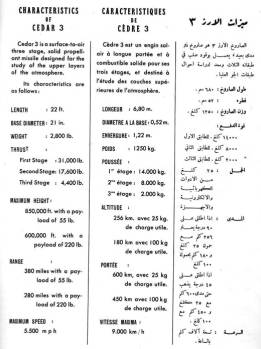
|
| Cedar-3 |
|
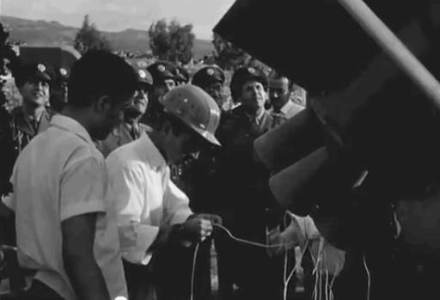

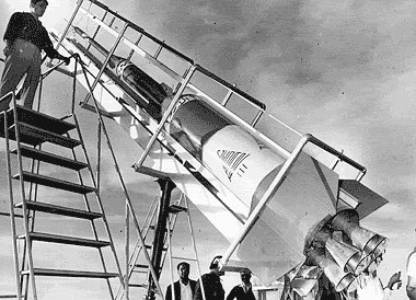
Seven nozzles, similar as German
"Rheintochter"
|
|
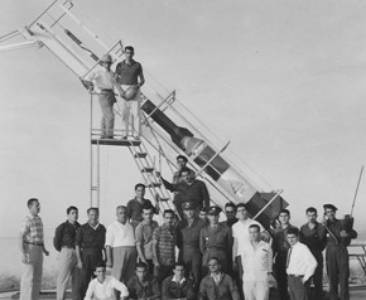
|
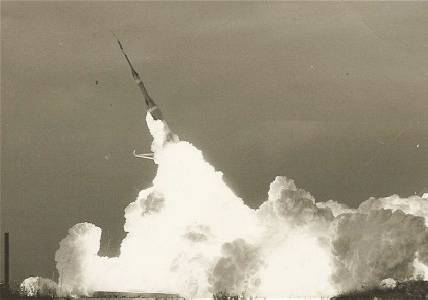
|
| Cedar-4 |
|
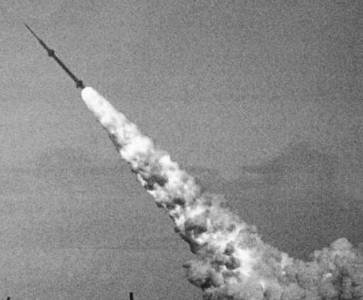
Cedar-4 launch
|
|
Launch date
|
|
|
Cedar-1
|
xx.04.1961
|
small one-stage low altitude
rocket
|
|
Cedar-2
|
xx.05.1961
|
small two-stage low altitude
rockets
|
|
Cedar-2A
|
|
|
Cedar-2B
|
|
|
Cedar-2C
|
|
|
Cedar-3
|
21.11.1962 |
three-stage
rocket, short seven-nozzle booster |
|
Cedar-4
|
21.11.1963 |
three-stage
rocket, longer one-nozzle booster |
|
Cedar-5
|
|
? |
|
Cedar-6
|
32.09.1964 |
one-stage rocket |
|
Cedar-7
|
12.05.1966 |
two-stage rocket,
booster similar Cedar-3 (?) |
|
Cedar-8
|
04.08.1966 |
two-stage rocket,
110 km altitude |
|
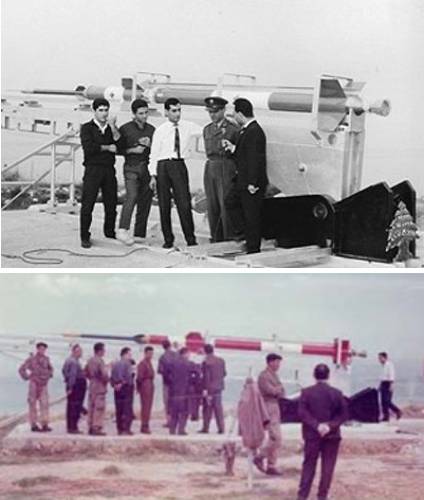
|
|
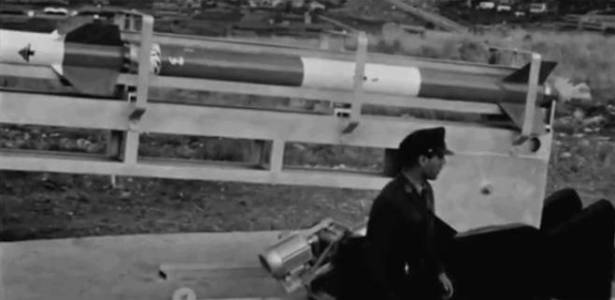
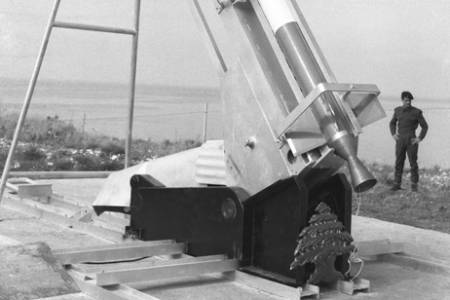
|
| Cedar-6, -7 and -8 rockets |
|
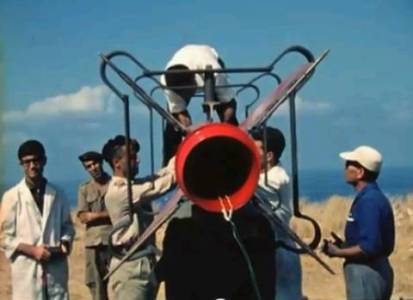
One-stage rocket Cedar-6
|
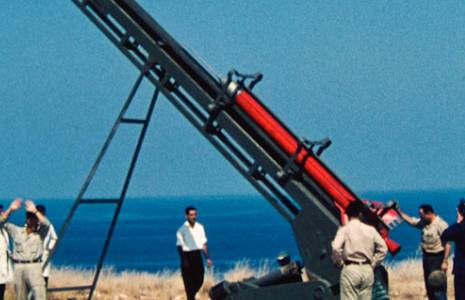
Cedar-6
|
|
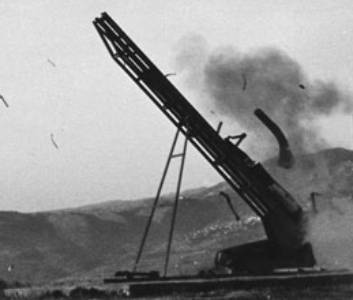
Two-stage rocket Cedar-7 explodes
on ramp
|
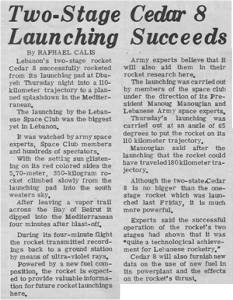
|
|